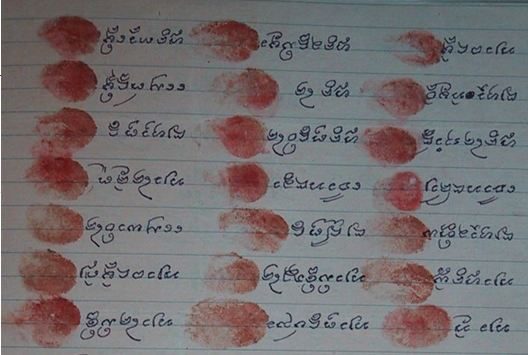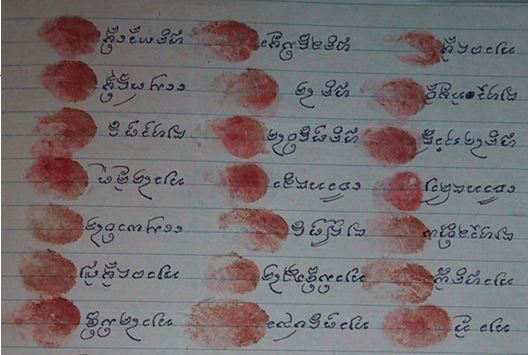Working through French colonial archives from northern Laos and Siam I have found a fascinating account of repressive Siamese action against the Shan rebellion which broke out in Phrae in July 1902. Some of the French officials had quiet sympathies for the Shan, and little sympathy for the Siamese who were rapidly expanding their administrative hold in the northern province.
French attitudes towards the Siamese hardened when reports started coming in of “unspeakable atrocities” committed by Siamese troops in their repression of the rebellion. An account of an incident in late October 1902, was provided by the French Consul in Nan. After some confrontations with rebels around near the village of Ta Pha (near Chiang Kham), Siamese troops marched into the village. They arrived at a house belonging to the Bombay Burma Company, a British trading and timber business. Here is an edited translation of the Consul’s account (with most of the original spelling, which is sometimes very difficult to decipher):
[The image is an extract from a petition presented by the heads of villages near Chiang Kham seeking protection from the French.]In a nutshell this is what happened: Tapha is a small village, at the junction of the roads, which lead from Nan and Pré. It is inhabited by Luus and Khamous people, it is a forestry station where the Bombay Burmah Company has a house, a shop and a rice granary. The rebels based in Xieng Kham had sent a vanguard on the 24th October to Tapha to try to stop the troops coming from Pré to cross the ford of Nam Méyon. In the morning of the 26th they learnt that a second column was coming from Penh-Yao to take them from the rear and decided to go towards it. They met at five or six kilometres from Tapha, when the column had just left Muong Sa.
Since they only had flintlocks they could only hold for a few moments and fled through the forest, towards Muong-Song, without entering into Tapha. This took place at 11am. Instead of following the rebels, the column kept marching on Tapha, which it reached at two o’clock in the afternoon. As soon as they came in sight of the houses, and although there was not a single rebel left, they fired several salvos and came to the Bombay Burmah land.
They removed the flag of the company, destroyed the fence and riddled the house with bullets before going in. Inside they found three Khamous, a Lao, a Luu and an eight-year-old child; and two Burmese hired as guards. The soldiers chased these poor unfortunates who had taken refuge in the kitchen; one of the Khamous, the Lao and the Luu were killed at close range, the two other Khamous and the eight-year-old child were seriously wounded. The two Burmese were chained. The private house, the shop and the rice granary were vandalised and looted. After that they saw a big hut which belongs to the indigenous wife of the of the Company agent. There they massacred two women in their sleep, including a sixty year old and wounded two more.
Once these summary executions over, the crazed gunmen spread through the village to take people from their houses and move them to the pagoda where they were kept until nightfall. Meanwhile the plunder of the village took place in a systematic fashion by the soldiers, the partisans and the coolies of the column.
The morning after the Phaya Datzakone, who styles himself “Commander in Chief of the vanguard army”, arrived at Tapha were the whole army was now gathered. For five days, 600 regulars and as many coolies finished ruining the village before leaving for Xieng Kham. The day they left, the two Burmese of the Bombay Burma Company were taken five kilometres away, were tied to a big tree each, facing the tree, and decapitated.
What is important/what we should keep in mind is that all the victims were in houses belonging to foreigners; and that all of them are, with no exception, English and French protégés and either employed or relatives of employees in the service of Foreigners. I met with my English colleague at Tapha who had also come to investigate; he is as upset as me. What will be done? It would seem improbable that both governments would leave such crimes unpunished. As to the rebels, they seem to have scattered for the time being.
 Facebook
Facebook  Twitter
Twitter  Soundcloud
Soundcloud  Youtube
Youtube  Rss
Rss 
